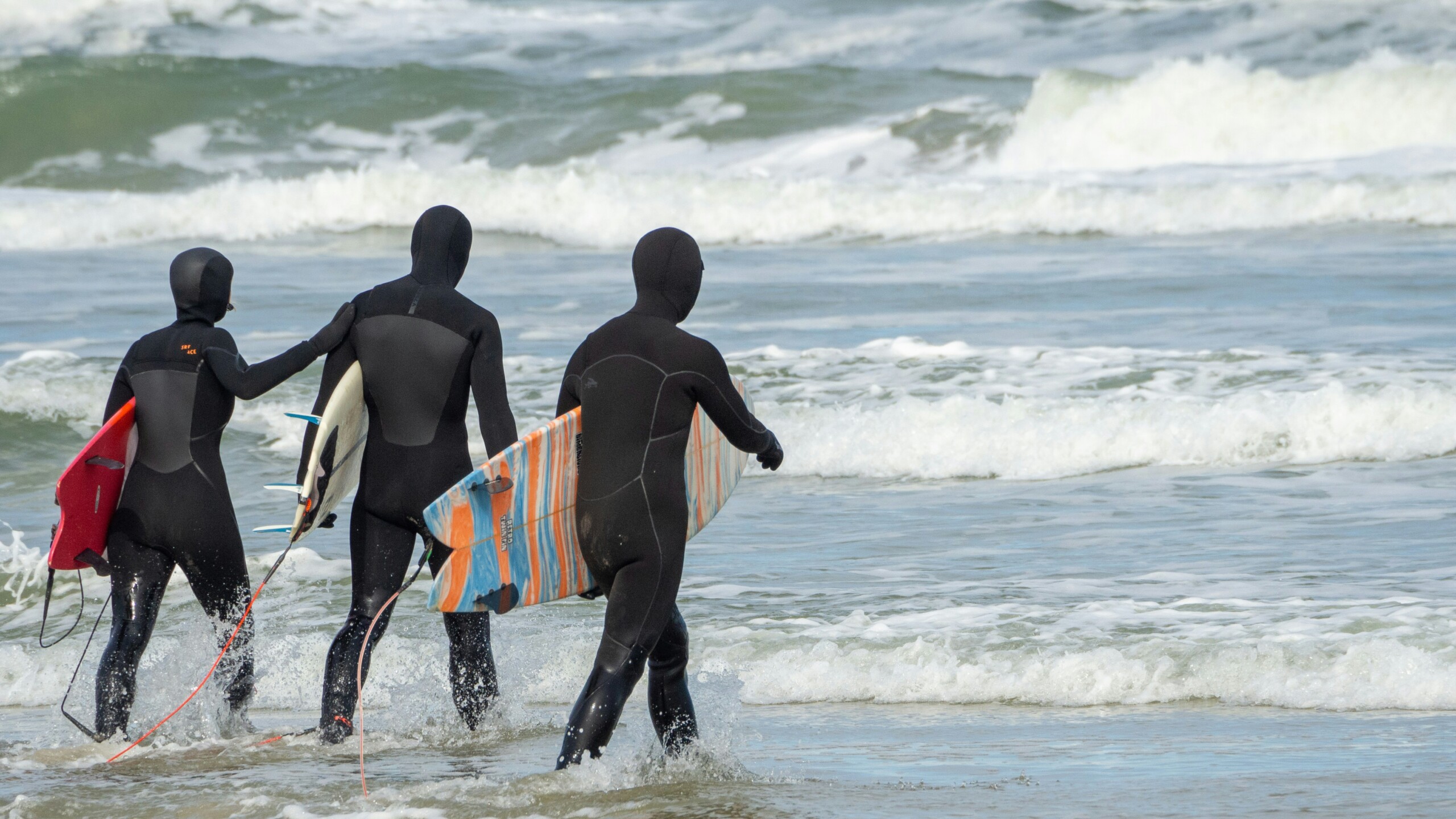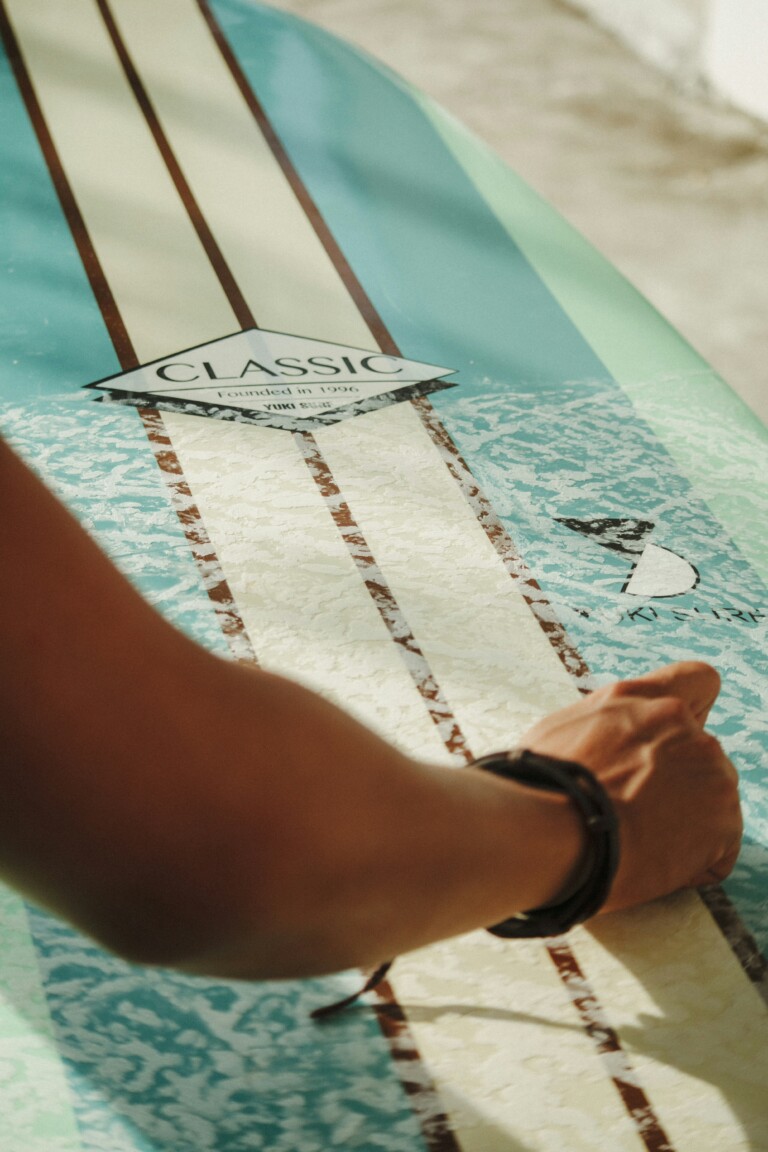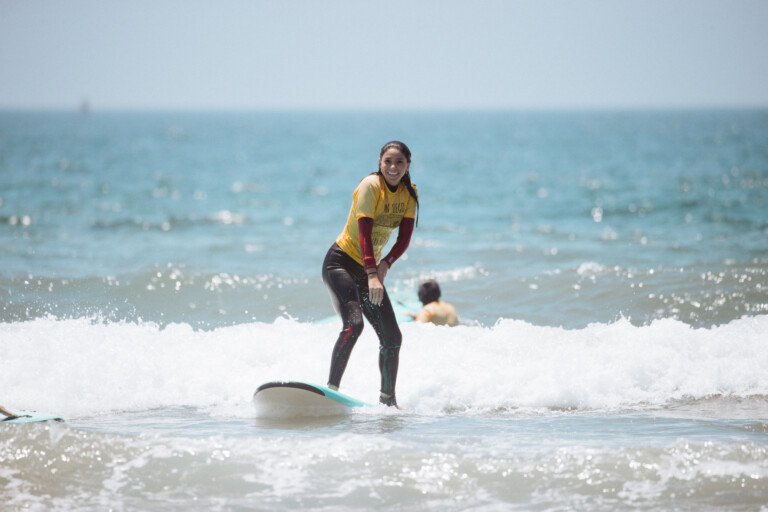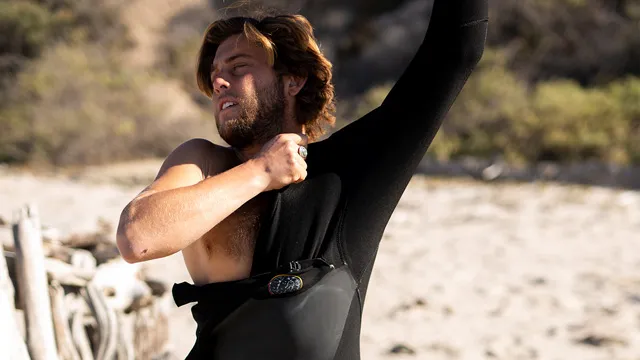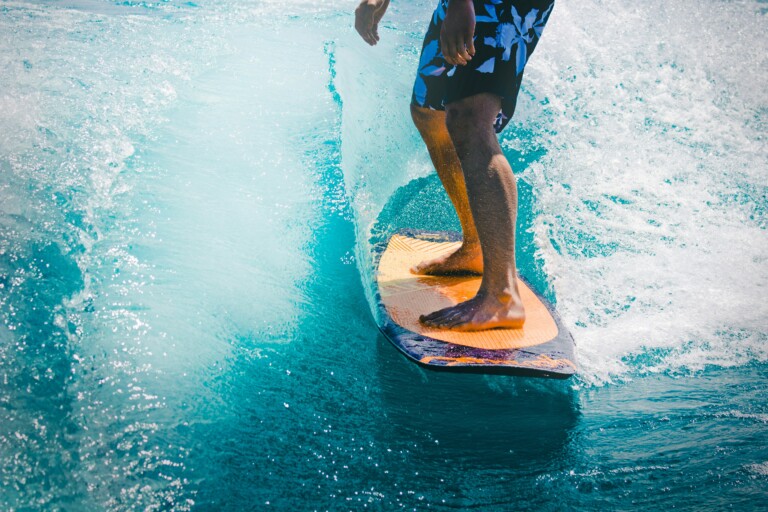Winter surfing in San Diego offers some of the best waves of the year, but it also comes with a few challenges that every surfer should be aware of. One of the most common issues that surfers face during the colder months is preventing surfer’s ear, a condition that can cause painful blockages in the ear canal and lead to long-term hearing issues if left untreated. At San Diego Surf School, we emphasize the importance of preventing surfer’s ear not just for experienced surfers but also for beginner surfers who are just starting to learn the ropes. In this article, we’ll break down what surfer’s ear is, why winter conditions make it more of a concern, and how you can take steps to protect your ears and continue enjoying your surfing lessons.
What is Surfer’s Ear and Why Is It a Concern?
Surfer’s ear, also known as exostosis, is a condition that affects the ear canal. It occurs when abnormal bone growth forms in response to repeated exposure to cold water and wind. These bone growths, known as exostoses, can obstruct the ear canal over time and lead to difficulty hearing, ear infections, and other complications. Preventing surfer’s ear is essential for long-term ear health, and it’s especially important for surfers who spend long periods in cold water, like those taking surfing lessons at San Diego Surf School. This condition doesn’t happen overnight but develops gradually, which makes it easy to overlook until it becomes a more serious issue.
Why Winter Conditions Increase the Risk of Surfer’s Ear
During the winter months, ocean temperatures drop significantly, and wind exposure increases, both of which contribute to the development of surfer’s ear. The colder the water, the more your body will react to it by producing extra ear wax, and prolonged exposure can cause irritation, leading to the bone growths characteristic of the condition. For those who frequent the surf throughout the winter, like many students at San Diego Surf School, the risk of developing surfer’s ear increases. This is why beginner surfers and seasoned wave riders alike must take extra precautions during the winter months when the conditions are harsher.
How to Prevent Surfer’s Ear: Key Tips for Cold Water Surfing
The most effective way to prevent surfer’s ear is by protecting your ears from prolonged exposure to cold water and wind. One of the best solutions is to wear earplugs designed for surfing. These earplugs are made to keep water out of the ear canal while still allowing for sound transmission, which is crucial for safety while in the water. At San Diego Surf School, we encourage all of our students, especially beginner surfers, to invest in a good pair of surf earplugs to reduce their chances of developing the condition. Wearing earplugs during surfing lessons or when you’re out in the surf for long periods can make a significant difference in preventing damage to your ears.
Additional Protection: Using a Surf Hood or Beanie
Another great way to protect your ears during the colder months is by wearing a surf hood or beanie made from neoprene. These accessories provide added warmth and create a barrier against the cold wind and water that can contribute to exostosis. Surf hoods are especially useful in San Diego’s winter surf conditions, which can see cooler water temperatures, especially in early mornings or on windy days. Even if you’re not in the water for an extended period, wearing a hood while paddling out can provide an extra layer of protection for your ears. At San Diego Surf School, we recommend wearing a hood or beanie when conditions are chilly to keep your body temperature stable and protect your ears from cold exposure.
How Limiting Time in Cold Water Can Help Prevent Surfer’s Ear
While the cold water is an inevitable part of winter surfing, limiting the amount of time spent in the water can also help reduce your risk of preventing surfer’s ear. Spending prolonged hours in the surf increases the likelihood of water getting trapped in the ear canal, especially when it’s cold. After each wave or surfing lesson, it’s a good idea to take breaks on the beach to warm up and let your body dry off. If you are a beginner surfer still getting used to spending time in the water, take shorter sessions and gradually increase your exposure. This will not only help prevent ear problems but also ensure you’re not overexerting yourself in the cold conditions.
Drying Your Ears After Surfing: A Simple Yet Effective Step
After every surfing session, it’s important to dry your ears thoroughly to prevent water from sitting in the ear canal. Trapped moisture can promote the growth of bacteria and increase the risk of surfer’s ear. One effective way to dry your ears is by tilting your head to the side and gently pulling on the earlobe to help the water drain out. You can also use a clean towel or a specialized ear dryer to remove excess moisture. At San Diego Surf School, we emphasize the importance of post-session ear care, ensuring that students are aware of how to protect their ears after each surf lesson.
Early Detection: Get Regular Check-Ups for Surfer’s Ear
Finally, regular check-ups with a doctor, especially if you’re experiencing any discomfort in your ears, can help detect the early stages of surfer’s ear. If you notice any symptoms, such as hearing loss, ringing in the ears, or a feeling of fullness in the ear canal, it’s essential to seek medical attention. Early intervention can prevent the condition from worsening and requiring more invasive treatments later. At San Diego Surf School, we always recommend that our students, especially those who surf year-round, stay on top of their ear health and consult with a healthcare professional if they notice any signs of ear trouble.
Start Your Surfing Journey Safely at San Diego Surf School
Whether you’re a seasoned surfer or just learning to surf, taking steps to prevent surfer’s ear in the winter is crucial for long-term ear health and enjoying the waves without worry. At San Diego Surf School, we ensure that all of our students, from beginner surfers to more experienced riders, receive the right guidance to keep themselves safe and comfortable in the water. By wearing ear protection, limiting exposure to cold conditions, and caring for your ears after each session, you can continue to enjoy surfing for years to come. Book a surfing lesson today and learn more about how to keep your ears healthy while you ride the waves!











